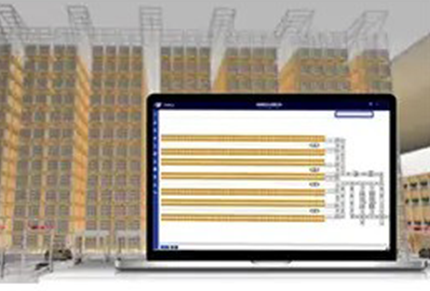Create Time: 09 ,11 ,2024
Shifting vacant spaces into warehouses has been a popular business idea, not just for supply chain companies but even for private individuals. Surprisingly, though, all these efforts are still not enough, and numerous businesses are still having a hard time managing their warehouses.
Why? Because there’s more to a supply chain than mere warehouses, you must have a great warehouse control system to prevent storage and handling issues for your business.
This article delves into the core aspects of WCS, shedding light on its definition and key components, differentiating it from WES and WMS, and identifying signs of a high-quality WCS system. Additionally, we will explore the challenges inherent in implementing WCS, offer insights into initiating your journey with WCS, and look at how Dropoff can be your ally in this transformative process.

In the face of rising eCommerce demands and a shortage of warehouse space, logistics companies are implementing strategic measures to address storage capacity challenges. Proactive steps include securing agreements for new storage facilities well before construction begins and expanding searches for locations beyond coastal ports, such as Knoxville, Tenn.; the Lehigh Valley in Pennsylvania; and Reno, Nev.
Alongside these efforts, the industry is turning to technological solutions, with Warehouse Control Systems (WCS) emerging as a key tool.
A Warehouse Control System (WCS) is sophisticated software designed to orchestrate, manage, and optimize activities within a warehouse or distribution center. As the operational nerve center, WCS facilitates seamless coordination among various material handling subsystems, directing the flow of products, maximizing the efficiency of automated equipment, and, at times, even generating insights for last-mile deliveries.
To delve deeper into warehouse management, it’s crucial to distinguish between WES, WCS, and WMS solutions.
To comprehend WCS solutions better, it’s vital to grasp the nuances between a Warehouse Execution System (WES), Warehouse Control System (WCS), and Warehouse Management System (WMS).
As a comprehensive solution, WES integrates features from both WCS and WMS. It optimizes tasks and equipment functions in automated warehouses, providing real-time inputs for dynamic and adaptive work processes. WES oversees the execution process, fostering efficient collaboration between warehouse components for heightened productivity in automated environments.
Dedicated to real-time control and optimization of Material Handling Equipment (MHE), WCS acts as orchestrator of warehouse activities. It ensures seamless communication between systems and devices, emphasizing tasks like order fulfillment management, inventory control, and equipment coordination. While offering real-time control, WCS typically doesn’t handle broader operational management functions, leaving tasks like labor management to other systems.
WMS operates at a broader level and encompasses various warehouse management functions, focusing on overall operations and task prioritization. It deals with inventory management, order processing, slotting optimization, and warehouse organization. Unlike WCS and WES, WMS doesn’t involve real-time control of material handling equipment but concentrates on strategic decision-making, ensuring accurate inventory tracking, efficient order processing, and optimal warehouse operation.
When venturing into the Warehouse Control System (WCS) implementation, it’s crucial to adopt a strategic and methodical approach.
Commence your WCS journey by conducting a thorough assessment of your warehouse’s distinctive needs and operational dynamics. This initial step involves close collaboration with both your operations and IT teams to ensure a holistic understanding of the existing processes, technological infrastructure, financial considerations, and scheduling requirements.
After this, define clear and achievable goals of your WCS solution. Work closely with key stakeholders to establish well-defined objectives that align with your warehouse’s unique demands and overarching business objectives. These goals should encompass various aspects, such as optimizing order fulfillment processes, enhancing inventory control, and improving overall warehouse efficiency.
Lastly, ensure collaborative effort between operations and IT teams and prioritize features within the WCS that directly align with your warehouse’s specific requirements. By aligning technological capabilities with operational needs, you ensure that the selected WCS solution not only meets the immediate demands of your warehouse but also lays the foundation for scalable, adaptable, and efficient logistics operations.